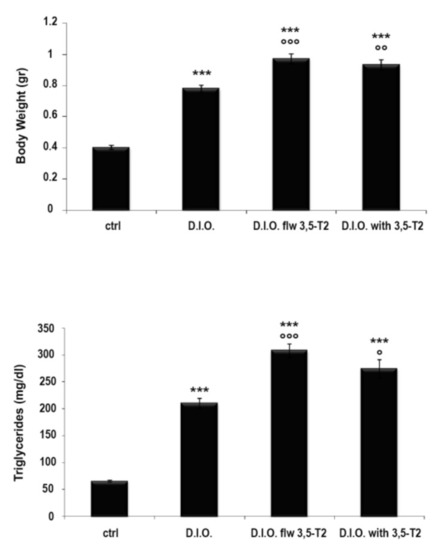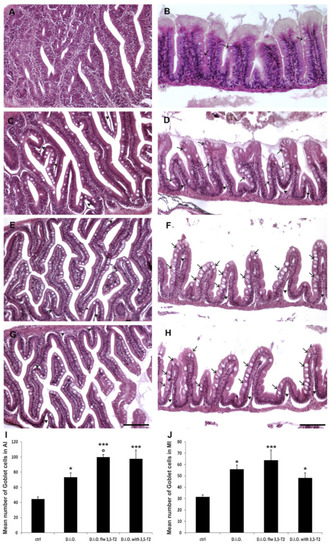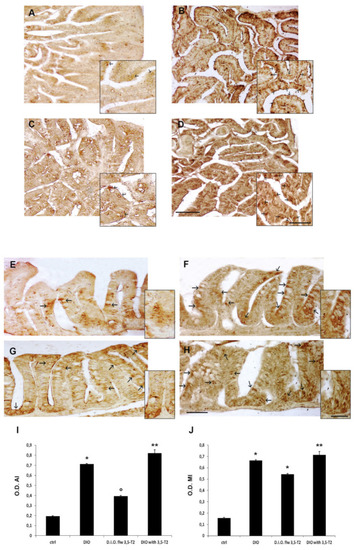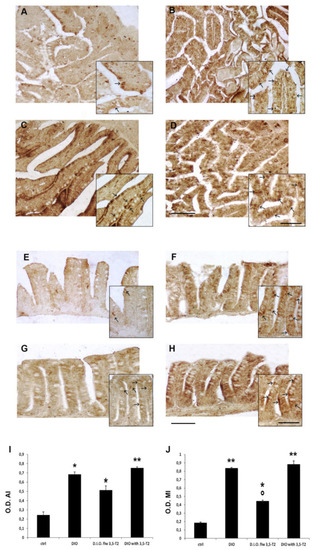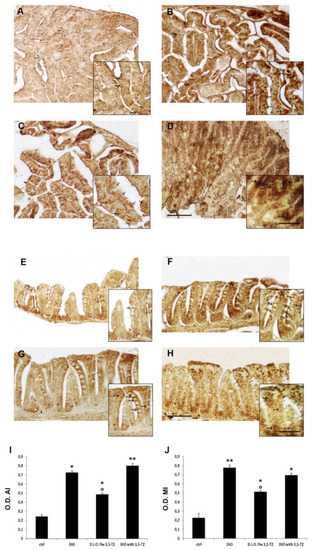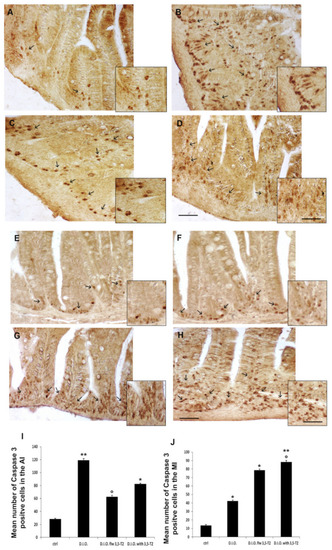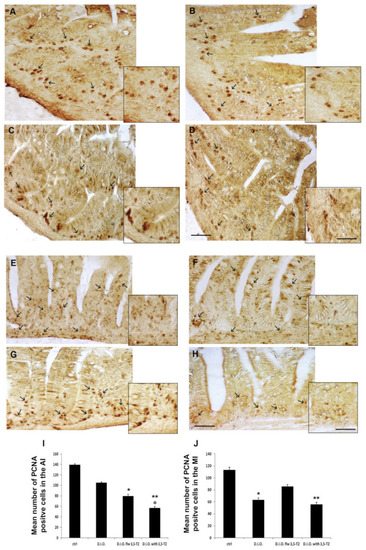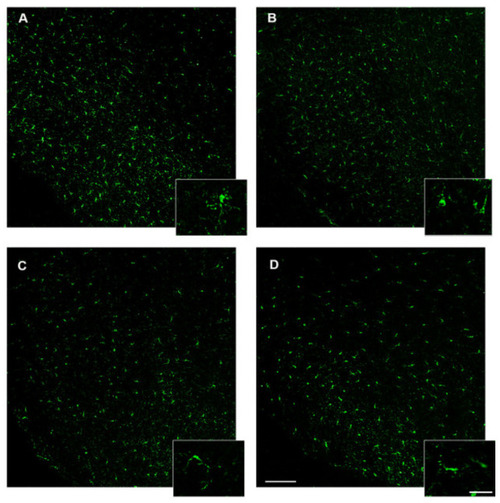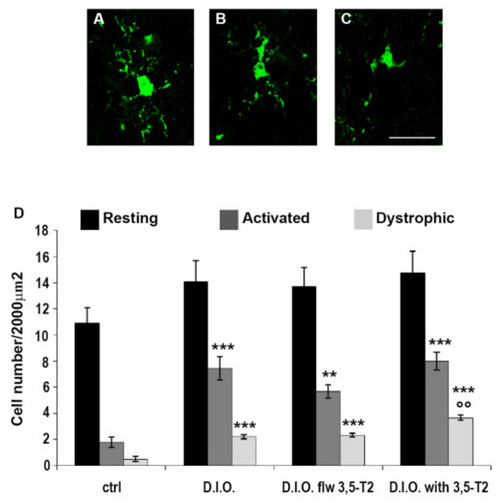- Title
-
Immunohistochemical Analysis of Intestinal and Central Nervous System Morphology in an Obese Animal Model (Danio rerio) Treated with 3,5-T2: A Possible Farm Management Practice?
- Authors
- Imperatore, R., Tunisi, L., Mavaro, I., D'Angelo, L., Attanasio, C., Safari, O., Motlagh, H.A., De Girolamo, P., Cristino, L., Varricchio, E., Paolucci, M.
- Source
- Full text @ Animals (Basel)
|
3,5-T2 effect on the body weight and triglyceride levels. ctrl (control zebrafish), D.I.O. (diet-induced obesity zebrafish), D.I.O. flw 3,5–T2 (D.I.O. zebrafish followed by 3,5–T2), D.I.O. with 3,5–T2 (D.I.O. zebrafish treated with 3,5–T2). Data are expressed as mean ± SE. *** |
|
Hematoxylin and eosin (H&E) staining of anterior (AI) and mid (MI) intestine of ctrl (control zebrafish), D.I.O. (diet-induced obesity zebrafish), D.I.O. flw 3,5–T2 (D.I.O. zebrafish followed by 3,5–T2), D.I.O. with 3,5–T2 (D.I.O. zebrafish treated with 3,5–T2). ( |
|
TNFα immunostaining in the anterior (AI) and mid (MI) intestine of ctrl (control zebrafish), D.I.O. (diet-induced obesity zebrafish), D.I.O. flw 3,5–T2 (D.I.O. zebrafish followed by 3,5–T2), D.I.O. with 3,5–T2 (D.I.O. zebrafish treated with 3,5–T2). ( |
|
COX2 immunostaining in the anterior (AI) and mid (MI) intestine of ctrl (control zebrafish), D.I.O. (diet-induced obesity zebrafish), D.I.O. flw 3,5–T2 (D.I.O. zebrafish followed by 3,5–T2), D.I.O. with 3,5–T2 (D.I.O. zebrafish treated with 3,5–T2). ( |
|
Calnexin immunostaining in the anterior (AI) and mid (MI) intestine of ctrl (control zebrafish), D.I.O. (diet-induced obesity zebrafish), D.I.O. flw 3,5–T2 (D.I.O. zebrafish followed by 3,5–T2), D.I.O. with 3,5–T2 (D.I.O. zebrafish treated with 3,5–T2). ( |
|
Caspase 3 immunostaining in the anterior (AI) and mid (MI) intestine of ctrl (control zebrafish), D.I.O. (diet-induced obesity zebrafish), D.I.O. flw 3,5–T2 (D.I.O. zebrafish followed by 3,5–T2), D.I.O. with 3,5–T2 (D.I.O. zebrafish treated with 3,5–T2). ( |
|
PCNA immunostaining in the anterior (AI) and mid (MI) intestine of ctrl (control zebrafish), D.I.O. (diet-induced obesity zebrafish), D.I.O. flw 3,5–T2 (D.I.O. zebrafish followed by 3,5–T2), D.I.O. with 3,5–T2 (D.I.O. zebrafish treated with 3,5–T2). ( |
|
Iba1 immunostaining in the brain of zebrafish. ( |
|
Morphological analysis of microglia in the brain of zebrafish. ( |

